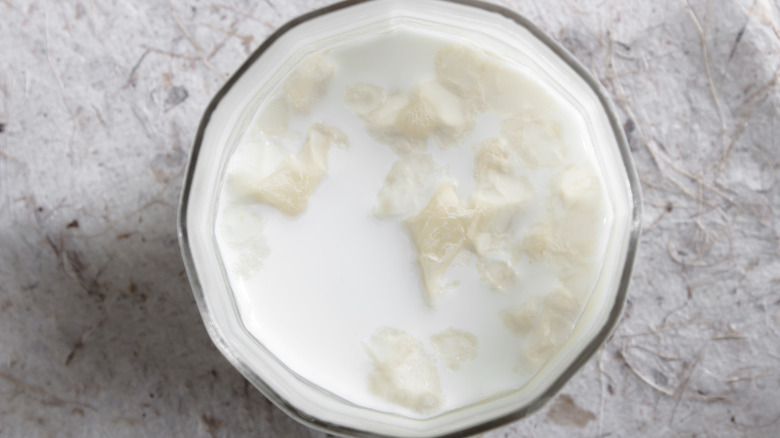Milk is a kitchen essential, beloved for its versatility and nutrition. But when it comes to storage, it’s not as forgiving as some other pantry staples. If you’ve ever wondered whether milk left out overnight is still safe to drink, you’re not alone. This article dives into the science of milk spoilage, the factors that influence its shelf life, and best practices to ensure its safety.
Understanding Milk Spoilage

Milk spoilage is a natural process triggered by bacteria and other microorganisms. When milk is left out at room temperature, these microorganisms thrive, breaking down its lactose and proteins. This leads to noticeable changes in its smell, taste, and texture.
Spoilage isn’t just about unpleasant flavors—it’s also a health concern. Consuming milk that’s gone bad can put you at risk of foodborne illnesses. So, understanding what causes milk to spoil is the first step in determining whether it’s safe to drink.
Factors That Affect Milk Shelf Life
Several factors contribute to how long milk stays fresh:
- Temperature: Milk should always be kept below 40°F (4°C). At warmer temperatures, bacteria multiply quickly, speeding up spoilage.
- Light Exposure: Light can degrade milk’s quality by breaking down vitamins and causing off-flavors.
- Bacterial Presence: Even pasteurized milk contains small amounts of harmless bacteria. However, at room temperature, these bacteria proliferate, leading to spoilage.
When milk is left out of the fridge for hours, these factors work together to compromise its safety.
The Science Behind Milk Spoilage
Milk spoilage primarily results from bacterial activity. Bacteria like Lactobacillus and Streptococcus naturally occur in milk and thrive in warmer environments. At room temperature, these bacteria multiply rapidly, converting lactose (milk sugar) into lactic acid. This process, called acidification, is what gives spoiled milk its sour taste and curdled consistency.
Interestingly, the warmer the temperature, the faster the spoilage. While pasteurization kills most harmful bacteria, it doesn’t eliminate all microorganisms. Once milk is exposed to room temperature for too long, these bacteria can take over.
Health Risks of Consuming Spoiled Milk
Drinking spoiled milk isn’t just unpleasant—it can make you sick. Common symptoms of food poisoning from spoiled milk include:
- Nausea
- Vomiting
- Diarrhea
- Stomach cramps
While pasteurized milk reduces the risk of certain harmful bacteria, leaving it unrefrigerated allows pathogens to grow. The longer milk sits out, the higher the chance it harbors harmful microorganisms.
Signs That Milk Has Gone Bad

Not sure if your milk is still good? Here are some telltale signs that it’s time to toss it:
- Sour Odor: Spoiled milk has a strong, unpleasant smell.
- Thick or Lumpy Texture: Fresh milk is smooth and liquid. If it’s curdled or lumpy, it’s no longer safe.
- Color Changes: Milk that has turned yellowish or has an unusual hue is likely spoiled.
When in doubt, trust your senses. If it smells off or looks odd, it’s better to discard it than risk illness.
Safe Practices for Storing Milk
Proper storage is key to keeping milk fresh and safe. Here are some tips to follow:
- Refrigerate Immediately: Always put milk back in the fridge after use. Keep it stored at 40°F (4°C) or below.
- Avoid the Door: Milk stored in the fridge door is exposed to fluctuating temperatures. Keep it on a middle shelf instead.
- Seal Tightly: Keep the lid or cap tightly closed to prevent contamination.
- Check Expiration Dates: While the date isn’t a guarantee of safety, it’s a good guideline. Consume milk before it expires.
These small habits can go a long way in preserving your milk’s freshness.
What to Do If Milk Is Left Out Overnight
If you accidentally leave milk out overnight, the safest course of action is to discard it. Even if it looks and smells fine, bacteria may have multiplied to unsafe levels. According to the USDA, milk and other perishable foods should not be left out for more than two hours at room temperature. This time frame is even shorter in warmer conditions.
Remember, spoiled milk doesn’t always show visible signs of spoilage right away. The risks outweigh the benefits of trying to salvage it.
Expert Opinions on Milk Safety

Food safety experts unanimously agree on one thing: milk should not be consumed if it’s been left out for extended periods. The USDA emphasizes that perishable foods left at room temperature for more than two hours should be discarded to prevent foodborne illness.
Microbiologists echo this advice, explaining that bacteria grow exponentially at room temperature. This means even a few hours can turn milk into a potential health hazard. Following these guidelines is a simple yet effective way to avoid unnecessary risks.
Conclusion
Milk left out overnight isn’t worth the gamble. While it might seem wasteful to throw away what looks fine, the unseen bacteria lurking in unrefrigerated milk can pose serious health risks. By understanding the science behind milk spoilage and adopting safe storage practices, you can ensure your milk stays fresh and safe to drink.
So, the next time your hubby questions whether that forgotten carton of milk is drinkable, you’ll have the answer. Play it safe, toss the questionable milk, and pour yourself a fresh glass. After all, keeping your family healthy is always the top priority!


